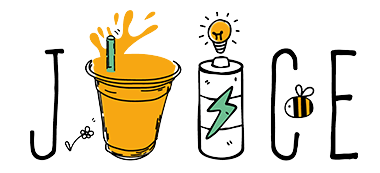Embracing Inclusive Approaches to Mental Health: Breaking Barriers and Building Support
Mental health is an essential aspect of our overall well-being. However, for far too long, it has been stigmatized and misunderstood. Whilst this is being tackled, a large part of society is being under-represented in this work. Different types of people need different types of support – be it the method, the knowledge base or the heart-mind connection.
Mental health is not a mystery with a quick fix. It is influenced by various factors such as culture, ethnicity, and background. Recognizing and respecting these differences is crucial in providing inclusive mental health support. Culturally sensitive approaches involve understanding and appreciating diverse perspectives, beliefs, and practices. This allows for tailored interventions that consider individual needs, preferences, and cultural contexts. A clear example of this is encouraging someone who may believe that ‘it is weak to talk about my feelings’ by citing religious texts that talk about the importance of mental health.
This works simply because mental health is inter-sectional. Individuals may face multiple forms of discrimination and marginalization based on their gender, race, sexual orientation, disability, or socioeconomic status. By acknowledging and addressing these intersecting identities, mental health support can be more comprehensive and effective.
With these acknowledgements, it is a given that mental health work must be inclusive. A person will require than just one strand of their circumstances considered. This provides us with a framework: background knowledge based upon the unique intersectionality of the person in question, the barriers that prevent them from seeking help, and utilising the background knowledge to create person-centred solutions.

Background knowledge is a key area that, when done right, will allow people to trust you. When someone is being understood, they are more likely to open up and share information, as well as listen to advice/be more willing to try suggested treatment. Part of this background knowledge is challenging the stigma that they have internalised. Stigma can create barriers that prevent individuals from seeking help or talking openly about their struggles. Stigma arises from both external and internal factors, bringing again the knowledge of all the different factors in a persons life in which they can hear/see the ‘consequences’ of talking about their mental health. By promoting open conversations, educating communities, and sharing personal stories, we can help break down these barriers and create an environment of acceptance. However, this is not achievable if we do not put in the work to ensure we can talk to people and communities in a language that they understand – both figuratively and literally.
Language is an essential part in ensuring accessibility. Countries are not homogeneous – there will be people in this county who do not speak English and they are, and will forever be, as much of a priority as English-speaking counterparts in the battle against poor mental health. Speaking to someone in a language they understand is a surefire way to ensure that the information being told will be used. In addition, some people may need to understand a concept in their mother-tongue first so that they can understand it in English. An example of this is how some languages do not have a direct translation for common jargon associated with mental health (e.g. anxiety, depression, low-mood, self-harm). When considering language figuratively, not everyone has the same life experiences, and so one anecdote or comment with not result in the same thought across two different people. This can be easily shown by the use of idioms. Someone who has not grown up in the North of England will have different idioms to someone in the South of England. Someone who has a different heritage to someone else will also have different common phrases, and often times tone and intonation is important (e.g. sick vs sick in British slang).
Accessibility also means the physical side of these services. We must ensure that services are physically accessible for individuals with disabilities and providing accommodation as needed, such as having online or telephone appointments. Additionally, making mental health services affordable can help reach populations that may otherwise be excluded, such as those that do not have money to travel to appointments or to purchase expensive equipment.
This raises the question – how do we, utilising our background knowledge and the knowledge of potential barriers, to create a solution?
We consider the same things we looked at when considering intersectionality. Inclusive mental health care requires collaboration between mental health professionals, community organizations, and individuals themselves. Engaging with community leaders, grassroots organisations, and advocacy groups can help identify specific needs and develop culturally relevant and community-driven solutions. By involving diverse stakeholders, we can create a collective effort towards mental health inclusivity. Moreover, people are not in isolation. Peer support plays a vital role in inclusive mental health care. Peer support groups and networks provide a safe space for individuals to connect and share their experiences. These groups can be particularly beneficial for marginalized communities, as they offer a sense of belonging and understanding. Encouraging the growth of peer support initiatives can help foster a supportive and inclusive mental health ecosystem.
Embracing inclusive approaches to mental health is a crucial step towards building a society that supports the mental well-being of all individuals. By challenging stigma, cultivating cultural sensitivity, addressing intersectionality, enhancing accessibility, empowering peer support, and collaborating with communities, we can break down barriers and create a more inclusive mental health care system. Together, let us foster a society that values and supports the mental health of every person, regardless of their background or identity.


